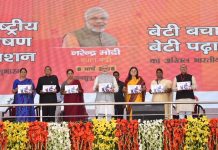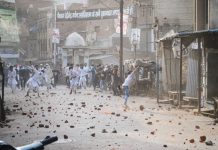
The study of history is essentially the study of the evolving relationships between different sections of society. Two major approaches, explained Oxford professor David Priestland at his session in THiNK 2013, are the Marxist method of looking at everything as conflict between rich and poor and the liberal idea, articulated in Francis Fukuyama’s The End Of History, of competing ideologies. Priestland proposed a third way, one which is quite familiar to an Indian audience: the caste system.
To clarify, Priestland is not advocating the caste system, not, in fact, passing any form of judgement on it. He uses it merely as an analytical framework in order to study world history, seeing the tumultuous events in our past in the context of competition between three castes to dominate the common man. Much like Manu’s varnas, or Sieyès’ three estates, he categorises them into the sage, the warrior and the merchant. The sage, he argues, evolved “from cleric to clerk”, moving beyond religious duties to bureaucratic ones. The warrior is used to refer to the military groups, the aristocrats in pre-World War Europe, the communists and the fascists of the 1930s, the military-industrial complex today. Priestland uses the merchant to refer to moneyed interests, calling it the dominant caste in the West today.
In that context, the events of the 20th century become a clash of value systems between these three castes, each of which would embed their own ideologies into their society’s ethos once they became the dominant group. The devastation of World War I brought an end to the dominance of the warrior aristocracy. The merchants then took over, bringing in the Roaring Twenties, before the Great Depression brought the next change. The 1930s again saw a return to militarism, with the fascists and communists feuding before Hitler’s actions brought another World War. The bureaucrats then took over as Europe worked to recover from the devastation of the war by building welfare states. This consensus would be challenged during the economic instability of the 1970s, as the merchants again took the ascendancy. Until the financial meltdown of 2008, which has again sparked more caste conflict.
It was the financial crisis that served as the trigger for Priestland’s 2012 book Merchant Soldier Sage, where he outlines this methodology. The crisis was caused, he said during the conversation with Pratap Bhanu Mehta, because the merchant caste “became too dominant”. Merchants don’t like tying their capital down, preferring to put it back in circulation; once they were given free rein to influence economic policy, they initiated measures that made access to credit easier, gradually creating the bubble. The solution, he believes, is in maintaining a balance between the three groups, something that he says is present in India. The problem in India, of course, is that the castes are too busy fighting amongst themselves. Only when they come together to put the national interest first will there be hope for true progress.









